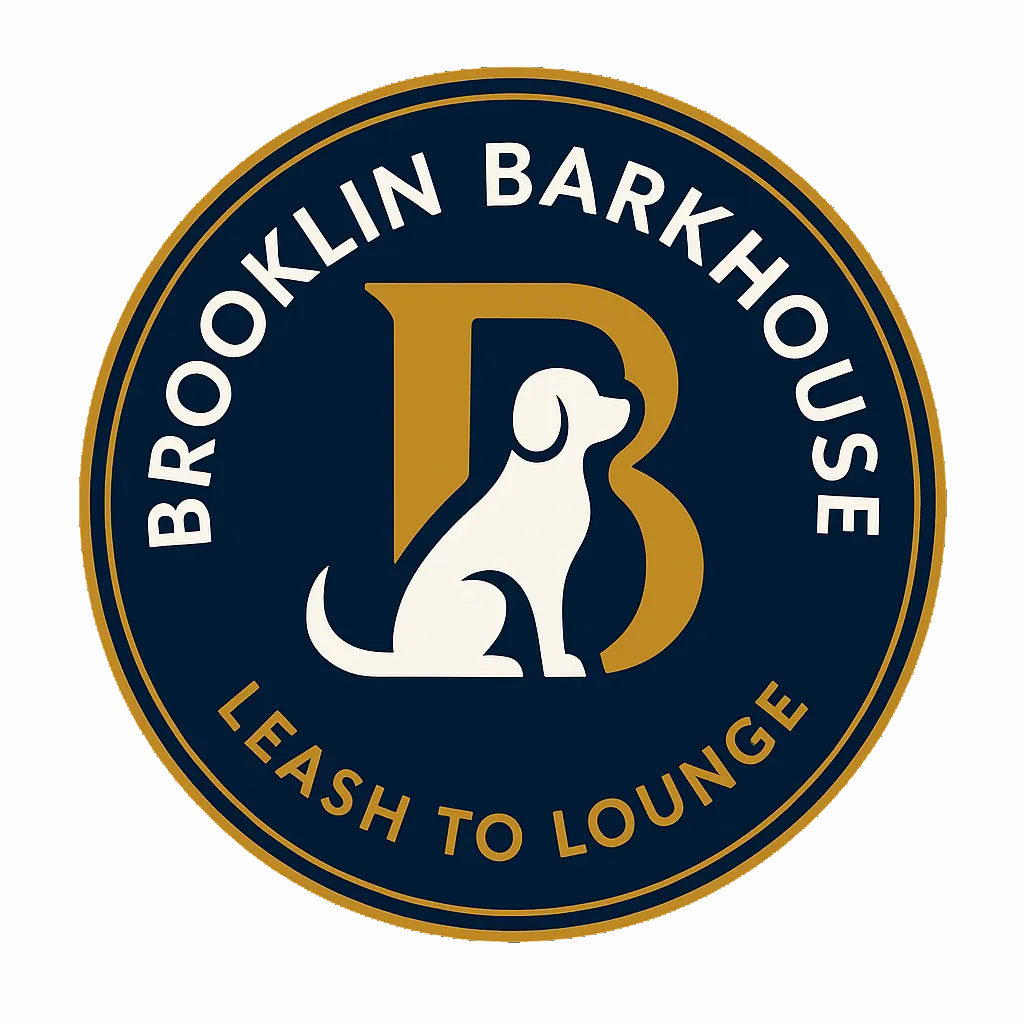An Unconventional Checklist for Boarding A Dog in Brooklin or Whitby
TL;DR: Leaving your dog in someone else’s care is nerve-wracking, but a thoughtful, human-focused approach ensures safety, comfort, and p:eace of mind. Prioritize references, facility standards, communication, and emergency plans above price.
Use this checklist to choose the boarding facility your pet deserves.
Picture this: You’re half-packed for your dream vacation. Suddenly, your dog cocks his head at your suitcase, eyes wide and tail drooping. I’ve been there—wracked with guilt and what-ifs about leaving my own pup, Lola, in someone else’s care. So let’s skip the generic checklists. I’ll walk you through not just what to pack, but how to trust your boarding choice, all pulled from my personal mishaps, wins, and the wisdom of hundreds of seasoned pet parents. Ready for a refreshingly honest take? Let’s dive in.
Types of Dog Boarding: Where Will Your Pup Feel Most at Home?
When it comes to choosing the right dog boarding options, it’s easy to get overwhelmed by the choices. Not all dog boarding facilities are created equal, and the type of environment you select can make all the difference for your pup’s comfort and well-being. Let’s break down the three main types: cage-free boarding, kennel boarding, and homeboarding—each with their own pros, cons, and quirks that matter more than you might think.
Cage-Free Boarding: Social, Spacious, but Not for Every Pup
Cage-free boarding is exactly what it sounds like: dogs roam freely in a supervised, leash-free indoor space with other pups. There are no kennels or cages, just open areas where dogs can play and interact. This group setting is great for social, well-adjusted dogs who thrive on activity and companionship. However, for dogs who are shy, easily overwhelmed, or have a history of anxiety, this environment can be stressful. Research shows that while some dogs blossom in a pack, others may feel lost in the crowd.
Kennel Boarding: Individual Space, Predictable Routine
In kennel boarding, each dog has its own designated area—think of it as a private bedroom. This setup is often misunderstood as being “caged,” but a good dog boarding facility ensures the space is comfortable and secure. Kennel boarding is ideal for pups who need a predictable routine or who prefer their own space. It’s also a safer option for dogs that aren’t comfortable around others. I’ll never forget the time my own shy mutt panicked in a bustling kennel, only to relax completely once we found a quieter, more private option. Sometimes, labels like “kennel” or “cage-free” don’t tell the whole story—your dog’s temperament does.
Homeboarding: Family-Style Comfort, Especially for Anxious Dogs
Homeboarding is a unique alternative where your dog stays in a real home—either with a sitter or a family. This option is especially popular for dogs with anxiety or special medical needs. The environment mimics a typical home, offering one-on-one attention and a familiar routine. For many anxious pups, homeboarding for anxiety can be a game changer. It’s less overwhelming than group settings and can feel like a home away from home.
Why Labels Matter—and Why They Don’t
Every dog is different. What works for one may not work for another. That’s why it’s smart to schedule a trial “playdate” or short stay before committing to a longer boarding period. This unconventional tip can reveal a lot about how your dog reacts to new environments and staff. And don’t just rely on Google reviews—sometimes, a quick chat with a canine behaviorist will give you more insight into what your dog truly needs.
End of the day, you have to decide which boarding setup is ideal for you depending on the temperament of your dog.
Remember, the best dog boarding options are the ones that fit your dog’s unique personality, not just the most popular or convenient choice.
References Over Ratings: Finding Trustworthy Boarding Facilities
When it comes to choosing a boarding facility for your dog, the process can feel overwhelming. With so many options available, it’s tempting to rely on Google ratings or flashy online reviews. But as any seasoned pet parent will tell you, these ratings don’t always tell the full story. In fact, word-of-mouth is always better than Google because there's a lot of reviews today on Google that you can't fully trust.
Why Personal References Matter More Than Ratings
Think about it: Would you trust your dog’s well-being to a place just because it has five stars online? Many Pet Parent Checklist guides now recommend seeking out first-hand stories from people you know. Real pet parent experiences offer insights that no generic review can match. Friends, family, or neighbors who have actually used a facility can tell you about the staff’s attitude, the cleanliness, and how their dog was treated—details that often get lost in online summaries.
Tap Into the Power of Community
Don’t have friends or family with recent boarding experience? That’s where pet parent communities come in. These communities are full of people eager to share their own Pet parent experiences—both good and bad. You can ask specific questions, get honest feedback, and even connect with pet parents whose dogs have similar needs to yours.
Online forums and Facebook communities are also great places to gather recommendations. The more personal the reference, the more confident you’ll feel about your shortlist.
Red Flags: Conflicting or Missing Feedback
While researching, pay attention to the patterns in feedback. If a facility has too many conflicting reviews or, worse, no feedback at all, it’s a sign to dig deeper. Ask for references directly from the facility—any reputable boarding place should be happy to connect you with previous clients. If they hesitate, consider it a warning sign.
Consult Veterinary Staff and Canine Experts
Veterinary professionals and canine behaviourists are often overlooked sources of reliable information. They see many dogs come and go from different boarding facilities and can offer recommendations based on your dog’s health and temperament. Plus, they’re familiar with Boarding facility requirements, like up-to-date vaccination records and health certificates dated within 10-30 days—an essential part of the Pet Parent Checklist.
Don’t hesitate to ask your vet or a trusted trainer for their opinion. They might even know about facility staff training, emergency protocols, or hidden gems in your area.
Shortlisting With Confidence
In summary, building your shortlist should be a mix of personal references, community input, and expert advice. Skip the shiny ratings and dig into real stories. Remember, your dog’s comfort and safety come first—and nothing beats the peace of mind that comes from a recommendation you can trust.
The Unfiltered Checklist: Beyond Clean Floors and Cute Photos
When it comes to finding the right boarding spot for your dog, it’s easy to get distracted by spotless floors and adorable Instagram photos. But a truly reliable Pet Boarding Checklist goes much deeper. Here’s how to look past the surface and make sure your dog’s boarding experience is safe, healthy, and stress-free—for both of you.
Ask Tough Questions: Facility Routines, Staff Experience, Emergency Protocols
Start with the basics: What’s the setup like? Is it a kennel, a cage-free space, or home-style boarding? How many dogs share a room? If you can’t visit in person, don’t hesitate to request real photos or videos of the actual living spaces—not just the staged shots you see online. Transparency is key.
Next, dig into the daily routine. When do dogs wake up, eat, and play? What happens if your dog skips a meal or seems anxious? These details matter. Also, ask about the staff. How many caretakers are present? What are their qualifications and experience with dogs? If possible, observe how they interact with the animals. Are they calm and confident? Your dog’s comfort depends on it.
Hygiene Isn’t Just About Tidiness—Disease Prevention Is Critical
Cleanliness is more than just a tidy floor. Research shows that up-to-date vaccinations—including rabies, DHPP, and bordetella—are essential Boarding facility requirements to protect your pet’s health. Ask if the facility checks vaccination records for every dog. Daily tick and flea checks are also crucial. If these protocols aren’t in place, your dog could be at risk for preventable diseases.
Don’t forget to ask about their cleaning schedule and how often living areas are sanitized. A reputable facility should have clear standard operating procedures (SOPs) for hygiene and care. As one expert puts it:
Having a good SOP at your boarding centre will make sure that your dog always gets consistently high degree of care.
Daily Communication: Why Regular Updates Can Save Your Sanity (and Your Dog’s)
Being away from your dog is tough. That’s why Daily updates from facility staff are so important. Whether it’s a quick text, a photo, or a video, regular communication can give you peace of mind. If a facility is reluctant to provide updates, consider it a red flag. You deserve to know how your dog is doing—every single day.
Security Features and Strict Protocols
Security is non-negotiable. Look for features like high walls, double-gate entry systems, and cameras. These aren’t just for show—they’re essential Security features that prevent escapes and help resolve emergencies. Strict check-in and check-out protocols also protect against mix-ups and theft, which, surprisingly, is a real concern in some areas.
Finally, ask about emergency procedures. Is there a vet on call? What happens if your dog gets sick or there’s an incident? A facility with clear answers is one you can trust.
Setup and space transparency
Routine and staff credentials
Hygiene and disease prevention
Daily communication
Security and emergency protocols
Use this Boarding Prep Checklist to go beyond the basics and ensure your dog’s boarding experience is as safe and comfortable as possible.
Packing Their Bag: Essentials, Comforts, and the Odd Surprise
When it comes to dog boarding, knowing what to pack can make all the difference between a smooth, stress-free stay and a week of anxious phone calls. The basics are obvious—food, medications, and veterinary records—but there are a few less conventional items and tricks that can really help your dog settle in. Let’s break down the essentials, the comforts, and the little surprises that can make your pup’s boarding experience feel a bit more like home.
Essentials: The Non-Negotiables
Food and Feeding Instructions: Pack enough of your dog’s regular food to last the entire stay, plus a little extra just in case. Include clear feeding instructions—amount, frequency, and any special notes. Research shows that sticking to your dog’s usual diet helps prevent digestive upsets and reduces stress.
Medications and Supplements: If your dog takes any medications or supplements, these should be included with clearly labeled dosage and administration instructions. Boarding staff rely on this information to keep your pet healthy and safe. It’s a good idea to double-check that all labels are legible and up to date.
Veterinary Records and Up-to-Date Vaccinations: Most facilities require proof of current vaccinations—rabies, DHPP, and bordetella are standard. Bring copies of your dog’s veterinary records, including health certificates dated within the last 10-30 days. Some places also ask for proof of parasite prevention and may require documentation of microchipping, spay/neuter status, or socialization history.
Comforts: Easing Anxiety with Familiar Scents
Boarding can be stressful, especially for dogs who are used to a certain routine or who have never stayed away from home before. One of the best ways to ease this transition is to pack comfort items:
Favourite Toy or Blanket: Something that smells like home can provide a huge sense of security. As one expert puts it:
Comfort items from home like toys or blankets help reduce anxiety in dogs during boarding.
Wild Card: An Old Shirt or Pillowcase: This is an underrated comfort trick. Pack an old t-shirt or pillowcase that smells like you. Many pet parents (myself included) swear by this simple gesture—it’s like sending a piece of yourself along for the stay.
Routine: Why Consistency Matters
Dogs thrive on routine. Boarding can disrupt their sense of normalcy, so the more you can duplicate your at-home routines, the better. Write out your dog’s daily schedule: feeding times, medication routines, and any special quirks. Share this with the boarding staff. It’s a small step that can make a big difference in your dog’s comfort and behaviour.
Documentation: Don’t Forget the Paperwork
Before you zip up that suitcase, double-check the paperwork. Most boarding facilities will not accept dogs without up-to-date veterinary records and proof of vaccinations. Some even require a recent health certificate and documentation of flea and tick prevention. If you’re unsure, call ahead—better safe than sorry.
In the end, a little extra thought about what to pack—from food and feeding instructions to comfort items and up-to-date veterinary records—can go a long way toward ensuring your dog’s boarding experience is as happy and healthy as possible.
Red Flags and ‘Cheap’ Traps: Knowing When to Walk Away
When it comes to choosing a dog boarding facility, it’s easy to fall into the trap of price-shopping. After all, who doesn’t want to save a few bucks? But here’s the truth: in the world of dog boarding, you really do get what you pay for. The best Dog Boarding Checklist will always put safety, care, and preparedness at the top—never the lowest price tag.
Let’s start with the basics. Quality boarding in Durham Region, Brooklin and Whitby typically costs between $60 and $150 per night. If you see a place offering rates far below this range, it’s worth asking why. Are they cutting corners on staff, security, or cleanliness? Sometimes, the “deal” comes at the expense of your dog’s well-being. Facilities that compromise on safety or staff training can put your pet at risk, and unfortunately, stories of theft or lost dogs are not as rare as you might hope. As one experienced pet parent put it:
It's important that we consider all the stuff that makes it safe for a boarding place to house our dogs rather than considering which is the cheapest one.
So, what should you look for instead? First, examine the boarding facility requirements. Are there strict entry and exit protocols? Research shows that strong security measures—like Cameras, double-gated entries, and ID checks—are essential. Without these, anyone could walk in, and in some cases, dogs have been stolen or gone missing. It might sound dramatic, but it’s a real risk, especially in busy urban areas where dog theft has become more common.
Next, ask about their emergency protocols. Do they have a veterinarian on call? What’s their response plan if your dog falls ill or escapes? Reliable facilities will have clear answers and won’t hesitate to share their Emergency contact information, including details for a local vet and secondary contacts for you. This isn’t just a formality—studies indicate that quick, organized responses in emergencies can make all the difference for your pet’s safety and health.
It’s also worth checking if the facility is prepared for worst-case scenarios. Are staff trained in basic first aid? Is there a clear evacuation plan? The best places will be transparent about their procedures and happy to show you their setup. If you sense hesitation or vague answers, consider it a red flag.
Finally, don’t let amenities like swimming pools or play areas distract you from the essentials. While these extras are nice, they should never come at the cost of security or emergency readiness. The right facility will balance comfort, fun, and—most importantly—safety.
In conclusion, when reviewing your Dog Boarding Checklist, remember: price is not the deciding factor. Prioritize boarding facility requirements, robust security, and thorough emergency contact information. The peace of mind you’ll gain is worth every rupee. Walk away from “cheap” traps and choose a place where your dog’s safety is never compromised.




